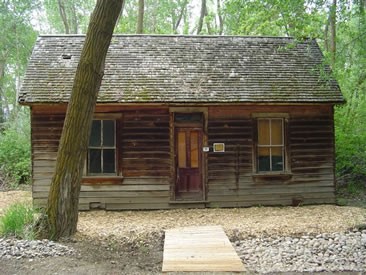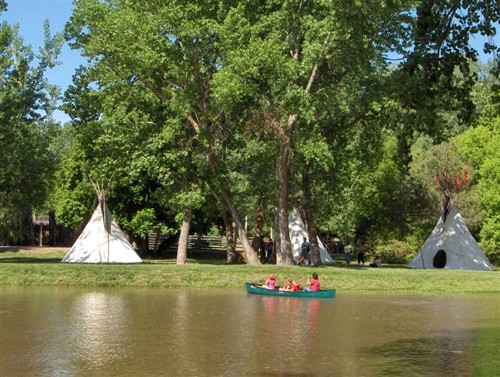Fort Buenaventura
Introduction
Text-to-speech Audio
Images
Recreation cabin that line the woods around the Fort.

View of the canoe pond that is bordered by recreated tepees.

Occasionally recreation performances are done on the land as well.

Backstory and Context
Text-to-speech Audio
Located on the Weber River, this fort and National Park symbolizes that era of change in western history when the first trappers and permanent settlers were meeting with the Native American tribes. In this replica, you will see forts, picnic areas, the canoeing pond, and three cabins.
Located on an 84-acre river tract of land near the Weber River, the fort symbolizes a period of western history that was the transition from nomadic ways of the Indian tribes and trappers to the first permanent settlers in the Great Basin. Facilities at the fort include picnic areas, a canoeing pond, the replica fort including three cabins and restrooms.
Some of the famous people to occupy this fort include Jim Bridger, Peter Skene Ogden, Jedediah Smith, Etienne Provost, and Hugh Glass - all men who lived in the Rocky Mountains and traded with the Native American tribes, married Native American women, and lived off the land. These men have been recreated by history, but their true stories are told here. See authentic artifacts from these men and others just like them who traveled the area. Learn about the Native Americans that they encountered.Fort Buenaventura has been constructed on the original site of the fort that was built in 1845 by Miles Goodyear and his wife. It has been reconstructed according to archaeological and historical research. The recreated fort’s dimensions, height of pickets, method of construction, and number and styles of log cabins are all based on documented facts. There are no nails in the stockade; instead historic wooden pegs and mortis and tenion joints hold the wall together.
